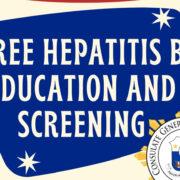Some of us may be shortening the life of our children without realizing it, unintentionally, unwittingly, all in the name of love, but nonetheless devastating to them when they reach middle age and beyond.
“Love not our children to death” is the message in my coffee-table book on disease prevention published in the United States, entitled Let’s Stop “Killing” Our Children. Its Philippine edition is coming out this month, with detailed info on philipSchua.com. The e-Book version is also available.
Alarming obesity statistics
Obesity in children has doubled the past couple of decades, tripled the past 30 years. If the trend is allowed to continue through our parental neglect, inaction, or indifference, it is conceivable that obesity will quadruple in another ten years. And since obesity increases the risk for diseases, like hypertension, diabetes and other metabolic illnesses, heart attack, stroke, and cancer, longevity would obviously suffer. All the gains mankind has achieved the past six decades through the advances in medical science and technology -preventive, diagnostic, and therapeutic– could simply go to waste for this segment of the world population.
Today, among the affluent people around the world, including those in developing nations, obesity afflicts about 20 percent of children aged 6 to 11, and more alarmingly, about 10 percent of those aged 2 to 5 are obese. Among those between ages 12 and 19, 18 percent are also obese.
Here in quotes are historical statistics on childhood obesity from the US National Health and Nutrition Examination Survey, which has been closely monitoring the figures starting from the 1960s: “Between 1963 and 2008, rates of obesity among children between the ages of 2 and 19 have been inching upwards. From 1963 to 1970, 4.2 percent of 6 to 11 year olds and 4.6 percent of 12 to 19 year olds were obese. In 1988, 11.3 percent of 6 to 11 year olds and 10.5 percent of 12 to 19 year olds were obese. In 2001, just over 16 percent of 6 to 11 year olds were obese. The last survey, from 2007 to 2008, 19.6 and 18.1 percent of 6 to 11 and 12 to 19 year old kids were obese. Between 1971, the first year results were available for 2 to 5 year olds, and 2008, young kids went from an obesity rate of 5 percent to 10.4 percent.”
To show a comparative parallel rise in obesity among adults, records show that in the 1960s there were 13.3 percent of adults who were obese. By 2006, the scale zoomed to 34.1 percent.
And pets are also obese
Among those 20 and older, 30% are overweight today compared to 15.1% twenty years ago. From 1996 to 2001, there were 2 million obese teenagers and young adults. Interestingly, about 1 out of 4 dogs and cats are tipping up the scale too.
In Asian culture, a chubby kid is somehow considered a healthy child. Many TV commercials today use plump and rotund children in their food, vitamin and other ads. This sends a wrong and dangerous message, and a disservice to the public, especially to our youngsters. Nothing is farther from the truth. Overweight children, as shown by countless studies, are more likely to develop a cluster of health problems and their complications, compared to their peers with normal weight. The greater the weight excess, or the higher a child’s body mass index (BMI), a measure of weight in relation to height, the greater the risk of acquiring the so-called metabolic syndrome early in life, which includes type 2 diabetes, high blood pressure and other cardiovascular diseases. Obesity, in children or in adult, is a significant health danger.
The risk factors and some alarming stats
The risk factors that characterize this syndrome are elevated triglycerides (blood fats), blood sugar, and blood pressure, low HDL (High Density Lipoproteins, the good cholesterol), and abdominal obesity. These precede the development of type 2 diabetes and cardiovascular diseases.
The increase in the incidence of diabetes has also catapulted: from 2.8 percent in 1980 to 4.2 percent in year 2000. This and cardiovascular illnesses parallel the rate of the our increasing waistline. Fifty percent of all obese adults have high blood pressure.
Not only for looks
The extra pounds negative impact the figure, but more importantly, obesity is an unhealthy baggage that takes its toll in terms of the development of otherwise preventable illnesses, like high blood pressure, heart disease, stroke, infertility, osteoarthritis, gall bladder disease, and many forms of cancer.
“Obesity is not a cosmetic issue and preventive measures ought to be implemented to stop further weight gain,” said Sonia Caprio of Yale University School of Medicine in New Haven, Connecticut, in a study published in the New England Journal of Medicine.
The “simple” complex equation
In a nutshell, weight gain is caused by taking in too much food and not burning enough calories to maintain a good balance, normal weight. If one eats 3000 calories a day, and does not exercise and remains a couch-potato watching TV, and burns only 1500 calories a day, it is obvious by simple arithmetic that this will lead to overweight. Hence, diet (quantity and quality of food) and daily physical exercise (at least 30 minutes a day) are the key ingredients to maintaining a normal weight and a healthier body. The other important factors in the equation are abstinence from tobacco, intelligent moderation in alcohol intake, and stress management and relaxation. Naturally, regular medical and dental check-up and religious compliance with prescription medications are also essential.
Timing of the strategy
The best time to start this strategy for health and disease prevention is during childhood, starting from the crib. That’s when the brain is more receptive to teaching and when preferences and habits are just beginning to develop. Our children learn by example and copy our bad dietary and exercise habits. A child with one obese parent is 3 times more likely to be obese as an adult, and one with two obese parents has ten times the risk. In general, the fault lies in us parents, whether we want to admit it or not.
For the rest of us, it is always never too late to start, no matter how old we are. Adopting a healthy lifestyle is always timely, anytime, at any stage in life. However, as I stressed in my book, dieting should start during infancy, in the crib, if we are to prevent damage to our children’s DNA and end the massive epidemics of obesity in children and adults and save our young from developing what society considers “normal and expected” diseases of adults like arthritis, diabetes, high blood pressure, heart attack, stroke, Alzheimer’s and cancer. On the contrary, if we protect the integrity of the DNA of our children starting from the womb and in the crib to adulthood, all these diseases are preventable.
***
Philip S. Chua, MD, FACS, FPCS, Cardiac Surgeon Emeritus in Northwest Indiana and chairman of cardiac surgery from 1997 to 2010 at Cebu Doctors University Hospital, where he holds the title of Physician Emeritus in Surgery, is based in Las Vegas, Nevada. He is a Fellow of the American College of Surgeons, the Philippine College of Surgeons, and the Denton A. Cooley Cardiovascular Surgical Society. He is the chairman of the Filipino United Network – USA, a 501(c)(3) humanitarian foundation in the United States. Email: [email protected]




